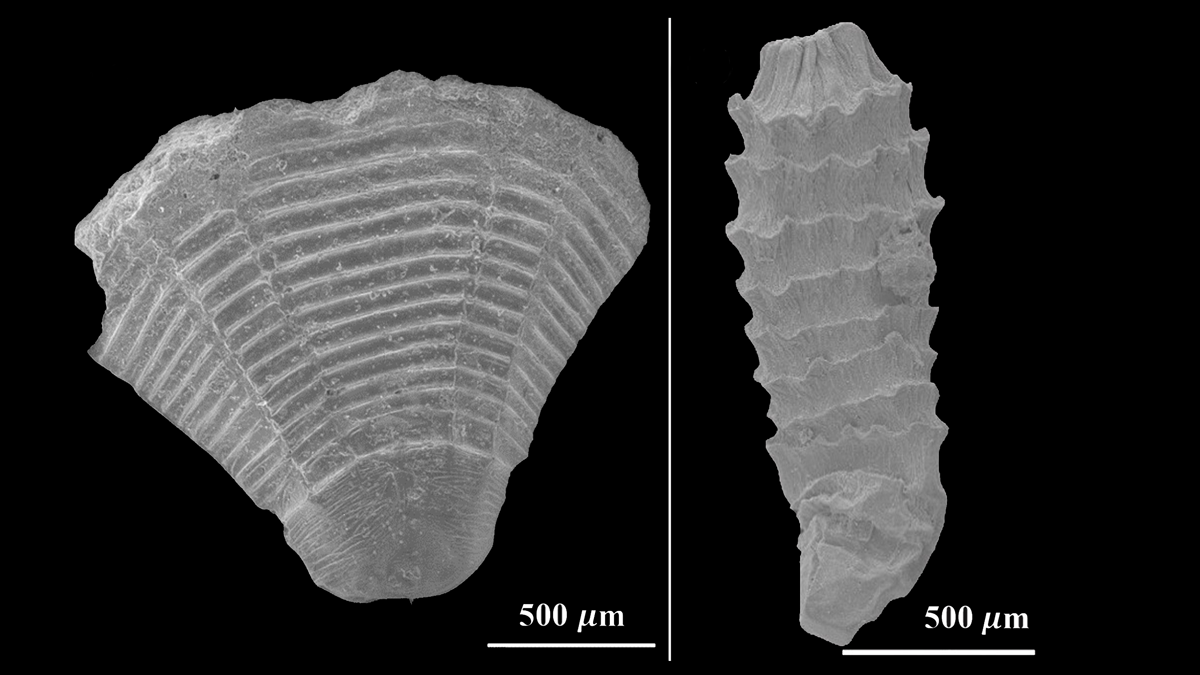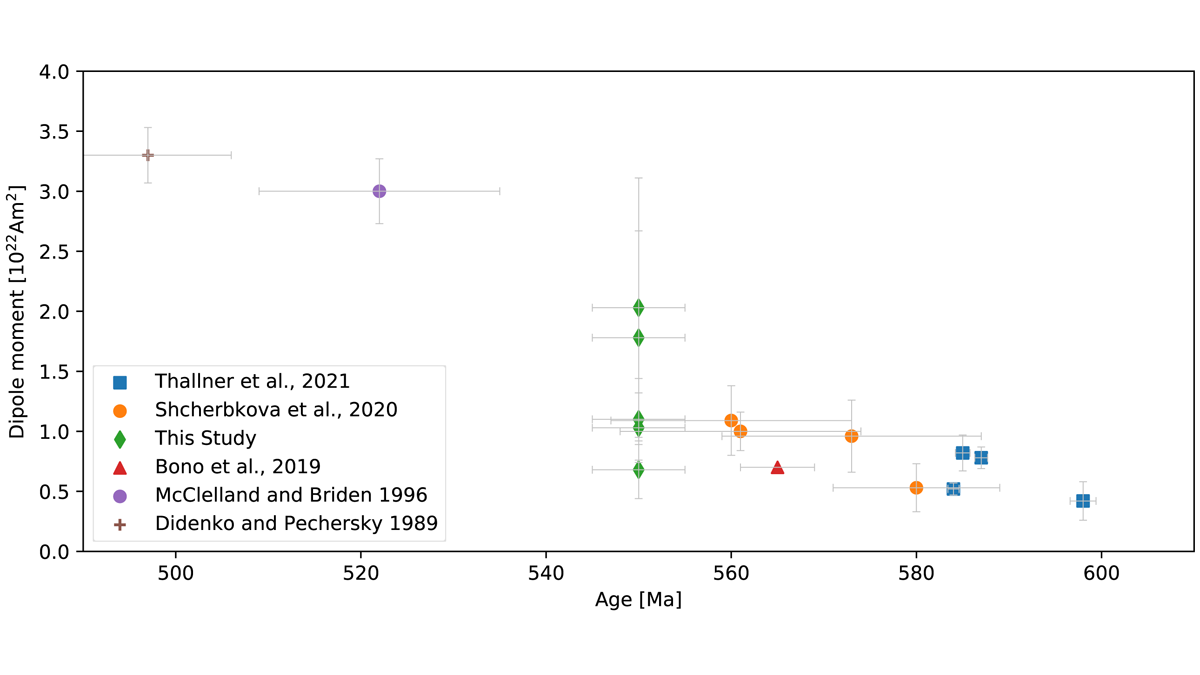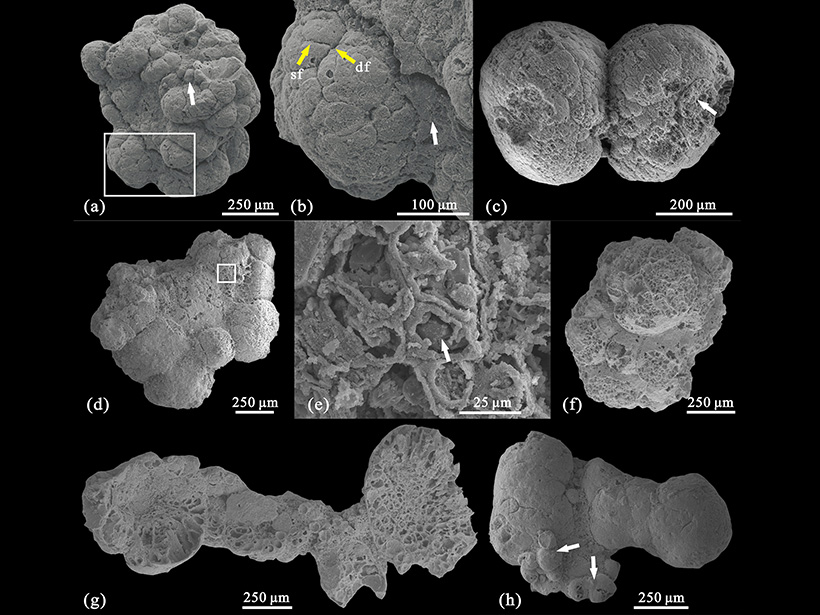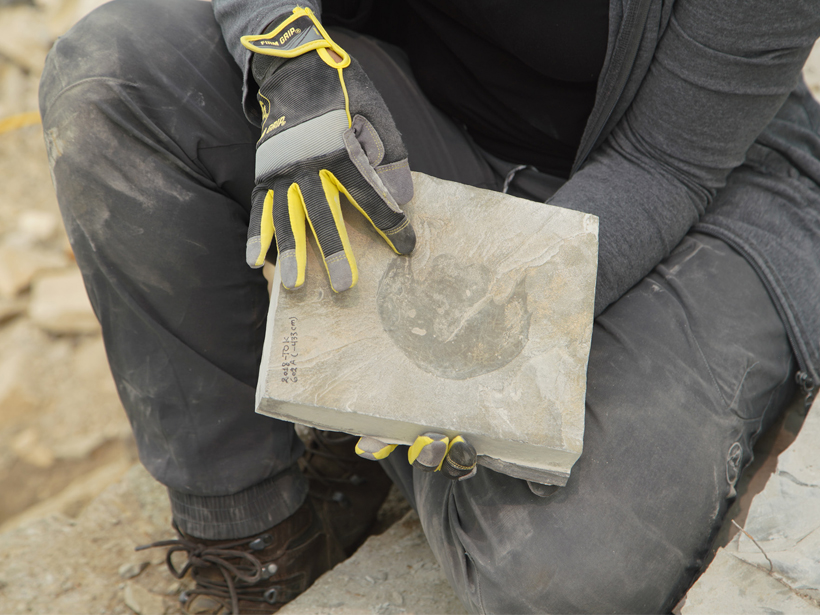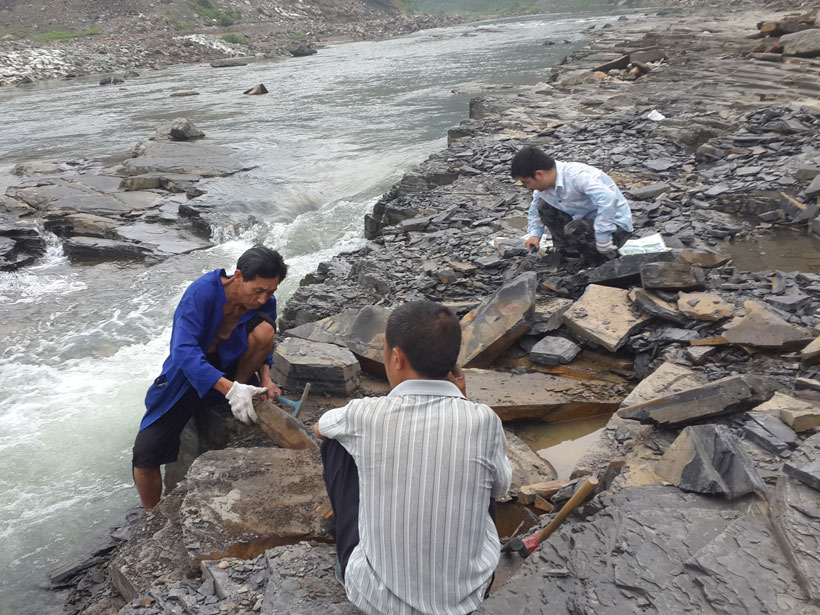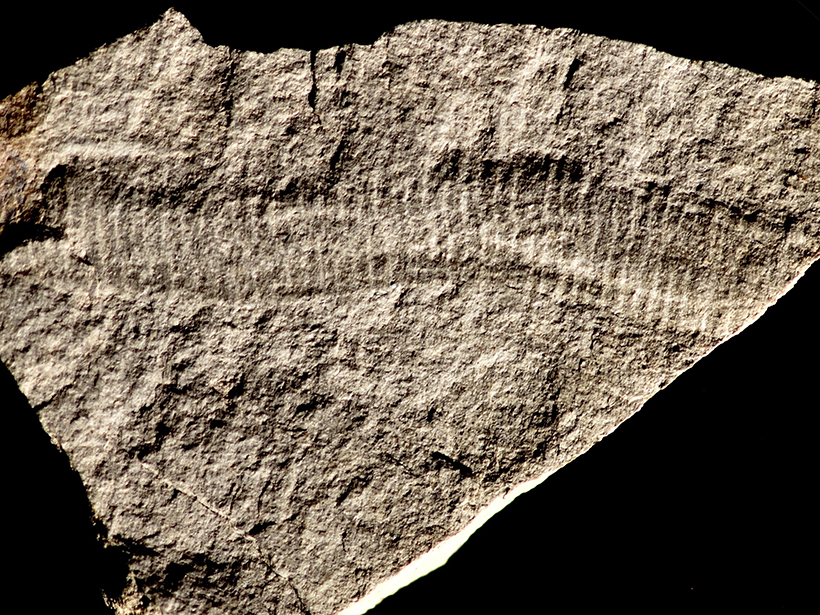Water flow simulations using 3D models of fossils yield new clues to the evolution of organisms known as medusozoans.
Cambrian
A Dipole Field from the Ediacaran-Cambrian Transition Onward?
The Ediacaran features an instable magnetic field complicating paleogeographic reconstructions; a new paleointensity study on late Ediacaran rocks indicates a weak but stable dipolar field.
Multicellular Algae Discovered in an Early Cambrian Formation
A new study describes eukaryotic organisms found organized in a cortex-medulla pattern in southern China’s Kuanchuanpu Formation.
Geologists Have a New Tool for Reconstructing the Ancient Climate
A new study of seafloor sediments finds that the temperature record in the early Paleozoic corresponds to significant shifts in the diversity of life on Earth.
Newly Discovered Fossil Species Named After Star Wars Starship
The 500-million-year-old species is a distant relative of today’s crabs, spiders, and insects.
Did Global Glaciation Cause the Great Unconformity?
In a new study, researchers make the case that large-scale glaciation during parts of the Neoproterozoic era led to extensive erosion of Earth’s crust.
Scientists Discover Pristine Collection of Soft-Tissue Fossils
The fossils include jellyfish, box jellies, branched algae, and sponges, which are underrepresented in or missing from other deposits.
Rocks with Soft-Tissue Fossils Share a Mineral Fingerprint
Discovering new resting places of these rare and information-rich fossils will be critical to understanding the largest expansion of life in Earth’s history, according to researchers.
Hunting Rare Fossils of the Ediacaran
The search for fossil imprints and casts of squishy organisms takes time, perseverance, and sometimes a sprinkle of luck.
Tectonic Events May Have Triggered the Cambrian Explosion
A researcher proposes a tectonic mechanism that could have helped drive one of the biggest evolutionary events in history: the Cambrian Explosion.

